This is the authentic Pesto Genovese recipe traditional in the city of Genoa, “Cinque Terre” and in the region of Liguria!
Pesto Genovese is famously served in the region of Liguria with green beans, bites of potato and a traditional regional pasta called trofie! It’s the perfect spring and summer dish! You can find that traditional basil pesto pasta recipe as well on our website.
Watch the Video Recipe!
Watch us make Pesto Genovese (called Pesto alla Genovese in Italy) the right way—with a mortar and pestle—in this video recipe:
Subscribe to our YouTube Channel
More video recipes? Subscribe to our YouTube Channel (it’s FREE) and click the bell to get notifications when we release a new video recipe!
How to Make Pesto Genovese with a Mortar and Pestle
We highly recommend you watch the video recipe on this page for making Authentic Pesto Genovese. After all, a video is worth a thousand pictures 😉 However, for those of you who want a quick photo summary, follow along below!
Why Use a Mortar and Pestle?
Like with many other traditional condiments, a mortar and pestle is the oldest way to mash ingredients for making pesto. It’s not just about tradition: pesto made in this way tastes much, much better!
Here are we using a Bembo 'Made in Italy' Mortar and Pestle—and we love it! You can find it on Amazon (affiliate link).
Why? Unlike a blender or food processor—which ‘cuts’ the food with a blade—the mortar and pestle allow you to truly mash all of the oils and flavors from the ingredients. No matter how fine a food processor has cut a piece of basil, it is still ‘cut’ and does not allow you to extract as much flavor from the basil (or the pine nuts).
We’ve prepared pesto with the best Italian ingredients both ways: with a mortar and pestle and with a food processor. The mortar and pestle absolutely delivers the best result. It’s like eating a totally different dish!
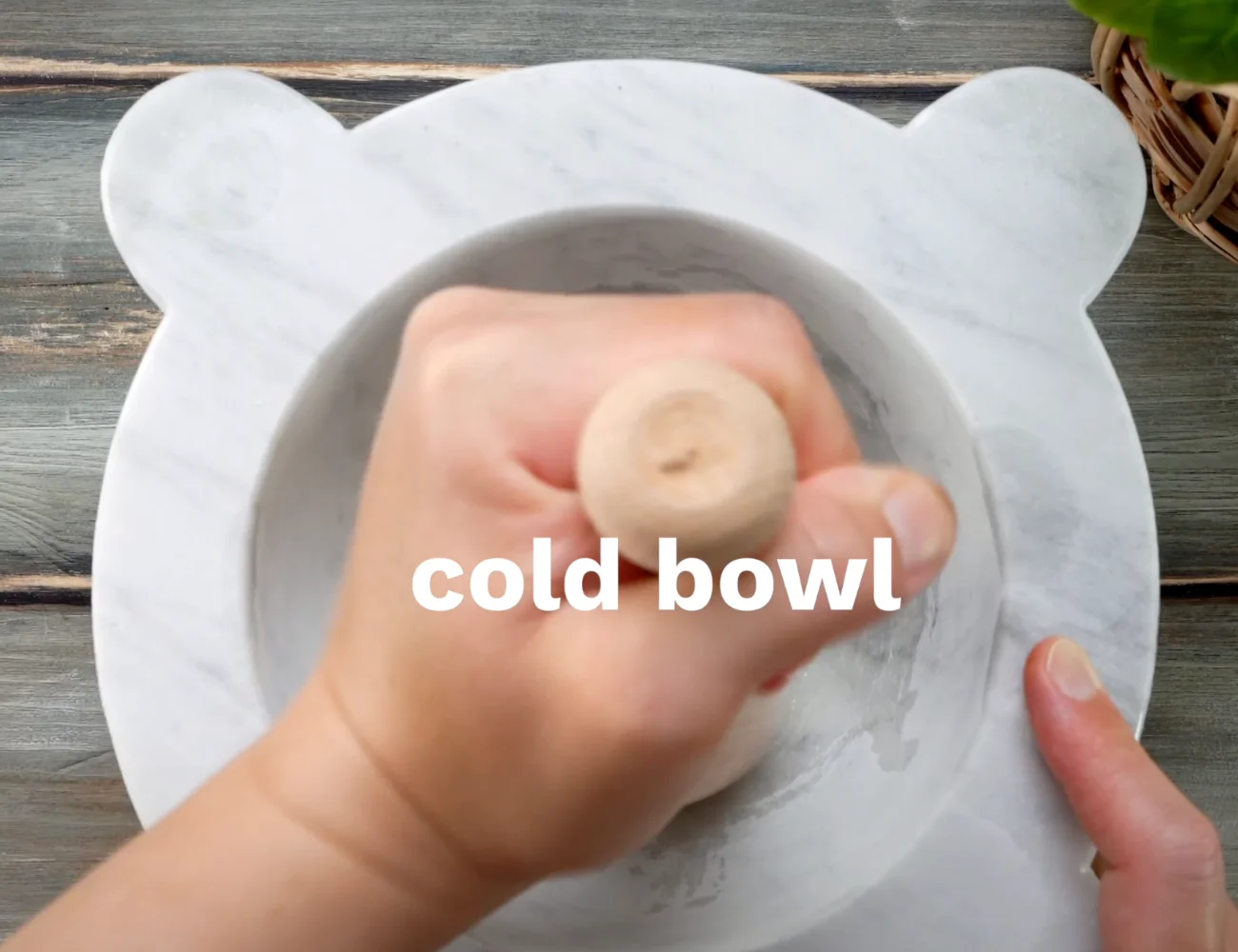
Chill the Mortar
The mortar is a heavy vessel that you can use to mash ingredients with a pestle (the tool you hold in your hand). We highly recommend using a large mortar and pestle as it is more efficient and allows you to make bigger batches of whatever you are mashing. Ours is made of marble and we love it.
Another advantage of using a marble mortar is that you can put it in the freezer to chill it before using it to make the Pesto Genovese. Why chill the bowl? Many of the ingredients in an authentic Pesto Genovese recipe need to be enjoyed fresh to experience their optimal flavor. Another disadvantage to using tools that ‘cut’ ingredients with a blade is that blade generates heat which in turn can heat the fresh ingredients, changing their flavor.
Garlic and Salt First
The first thing to do is mash the garlic and salt to a paste. This ensures those ingredients (including the strongly flavored garlic) are distributed evenly throughout the pesto and don’t end up in pieces.
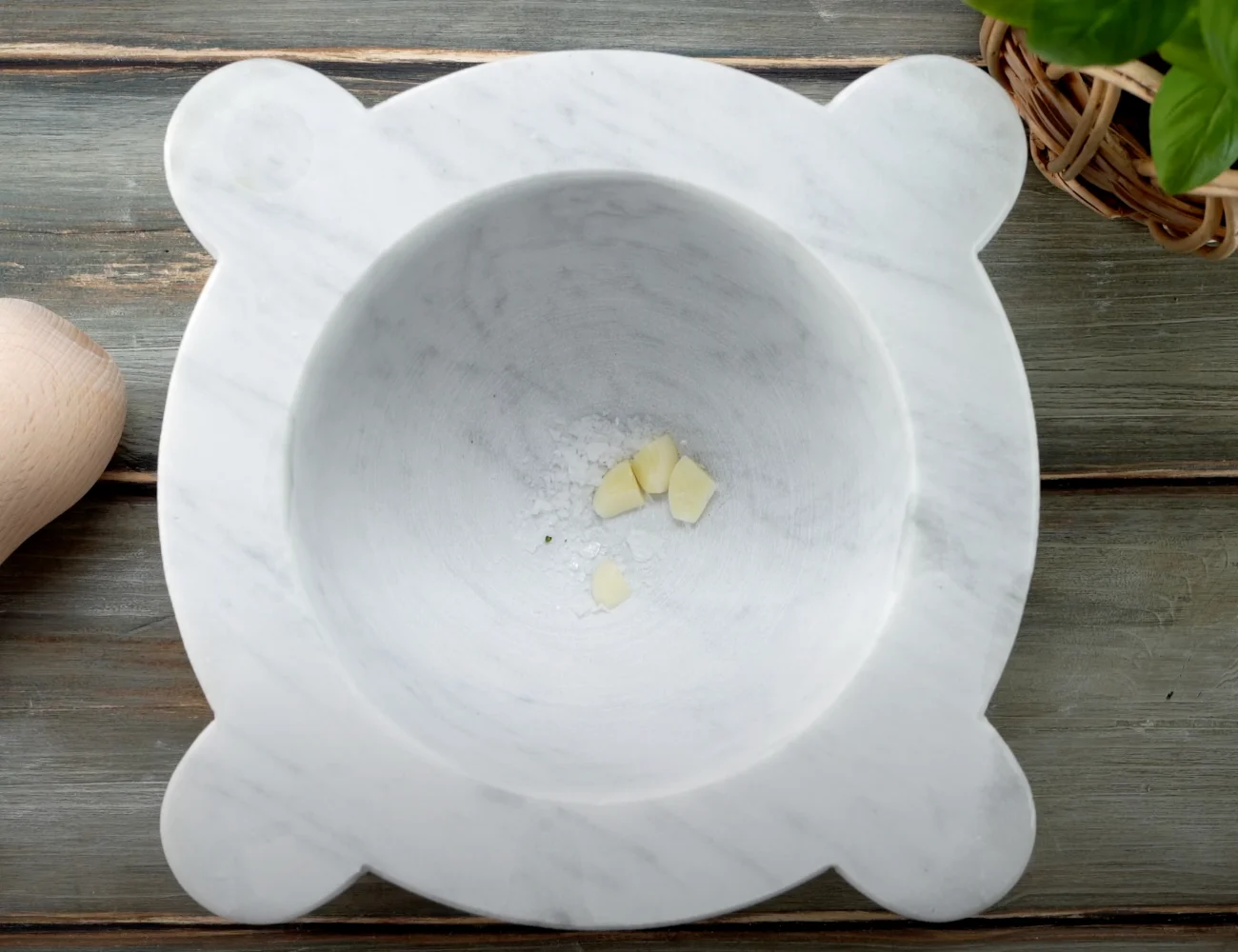
Mash the Pine Nuts
Add roughly half of the pine nuts and mash them to a paste. Save the rest for adding some friction to the basil leaves that still need to be mashed!
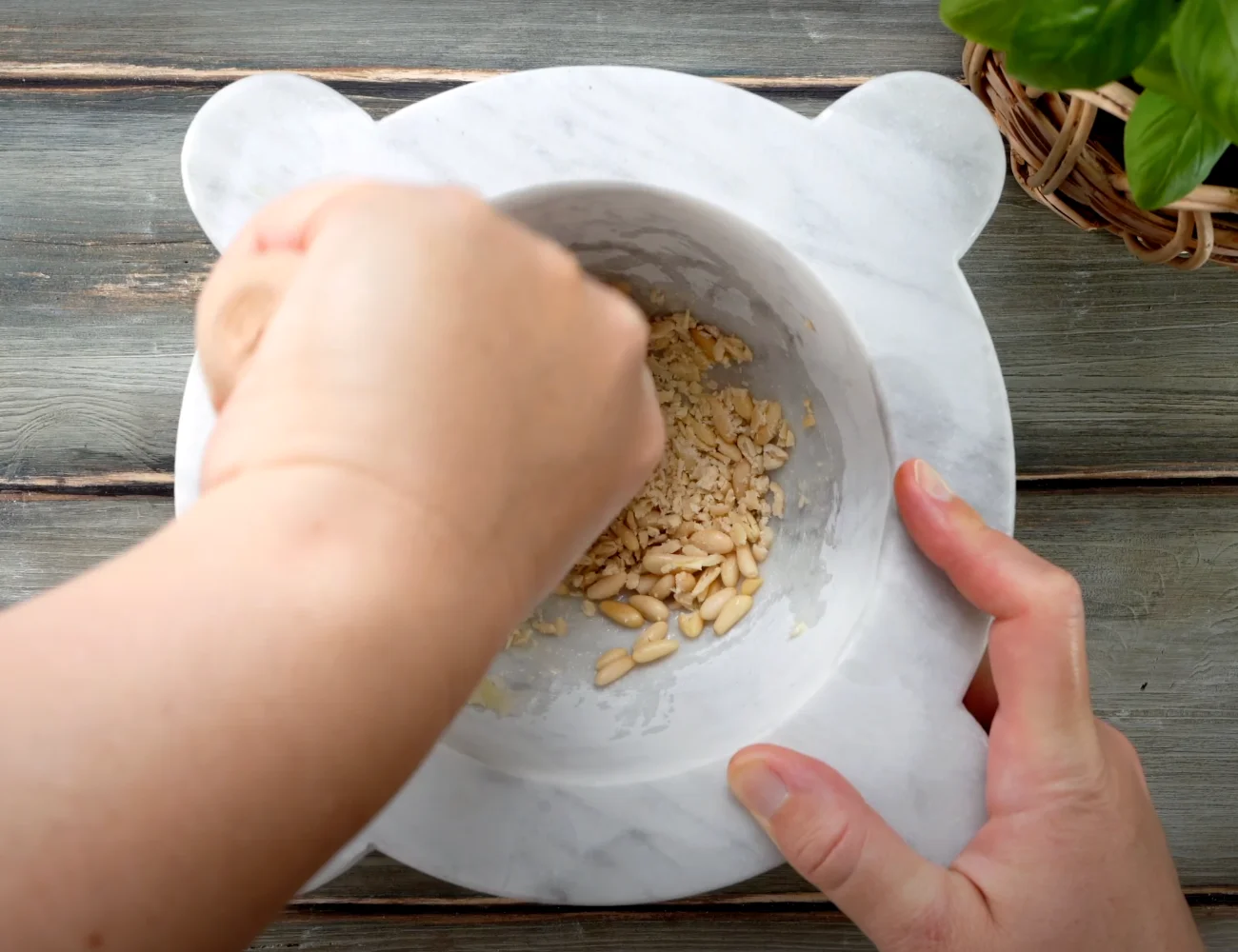
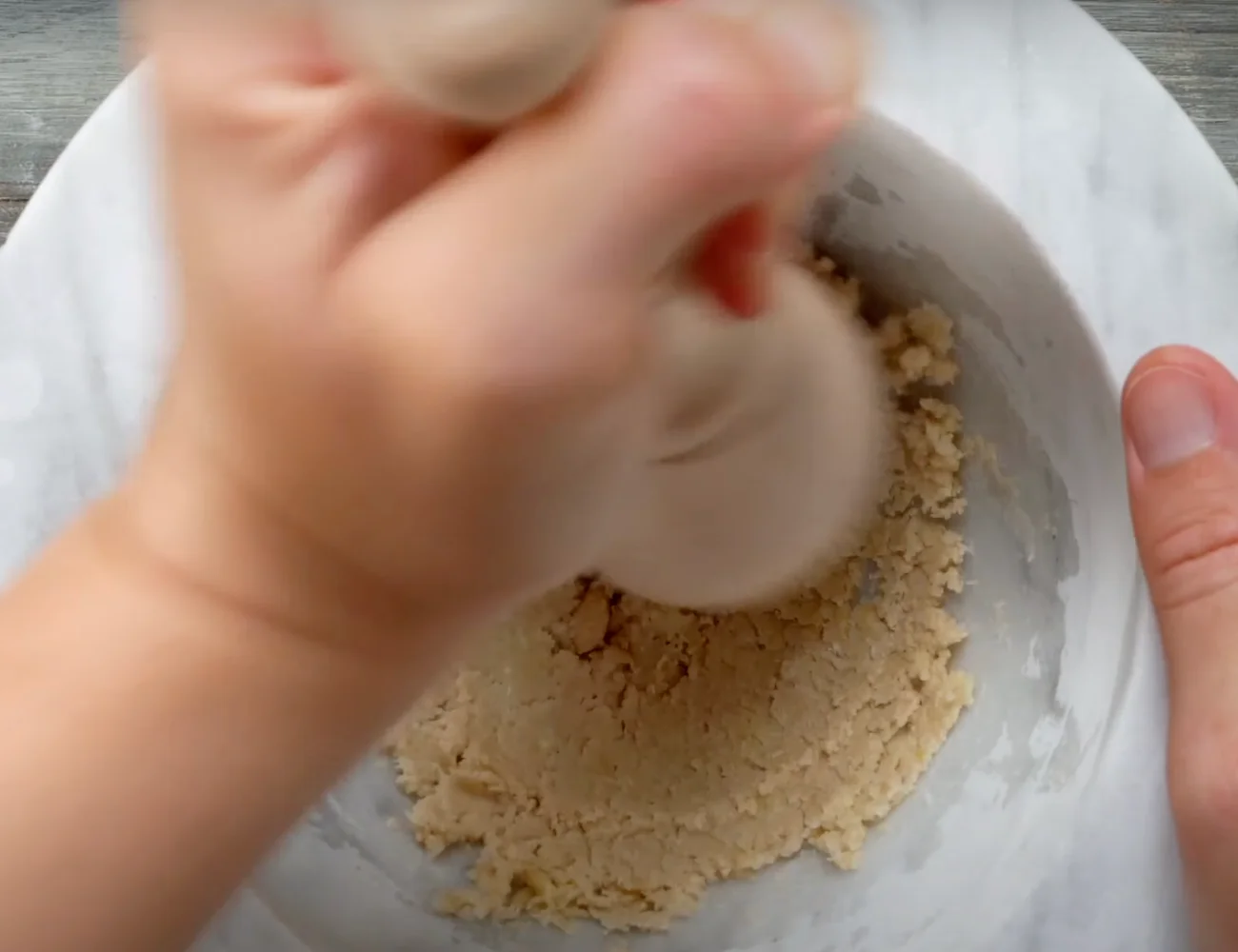
Add Handfuls of Fresh Basil Leaves… A Little at a Time!
When basil is in season, it’s almost easier to just buy small plants of basil, pick the leaves and put them right into your pesto. This will produce the freshest tasting pesto. Then you can grow the basil plants and have more fresh pesto later!
Add the fresh basil leaves a little at a time and add a few pine nuts with each handful to give the pestle some friction. This will aid in crushing and grinding the basil leaves.
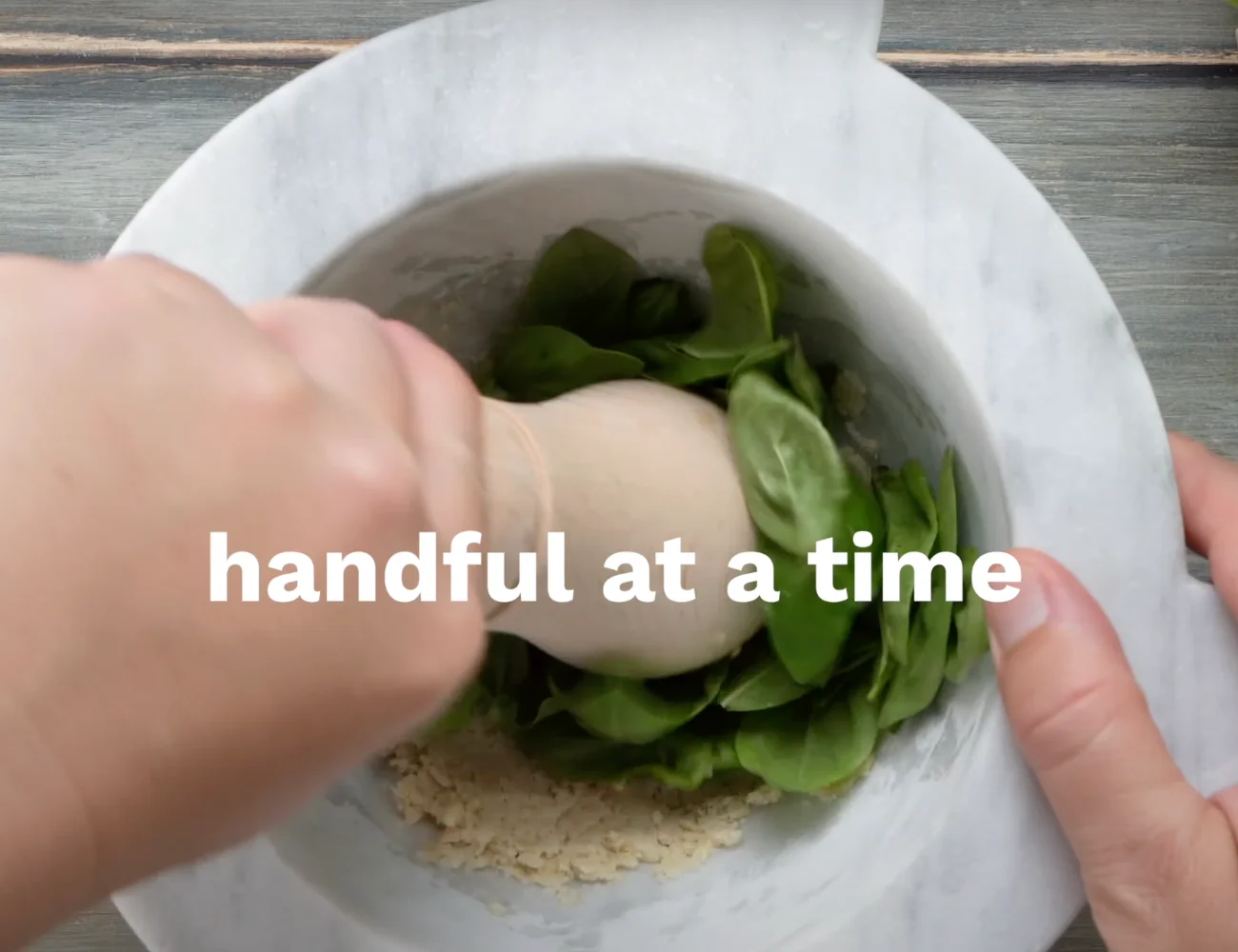
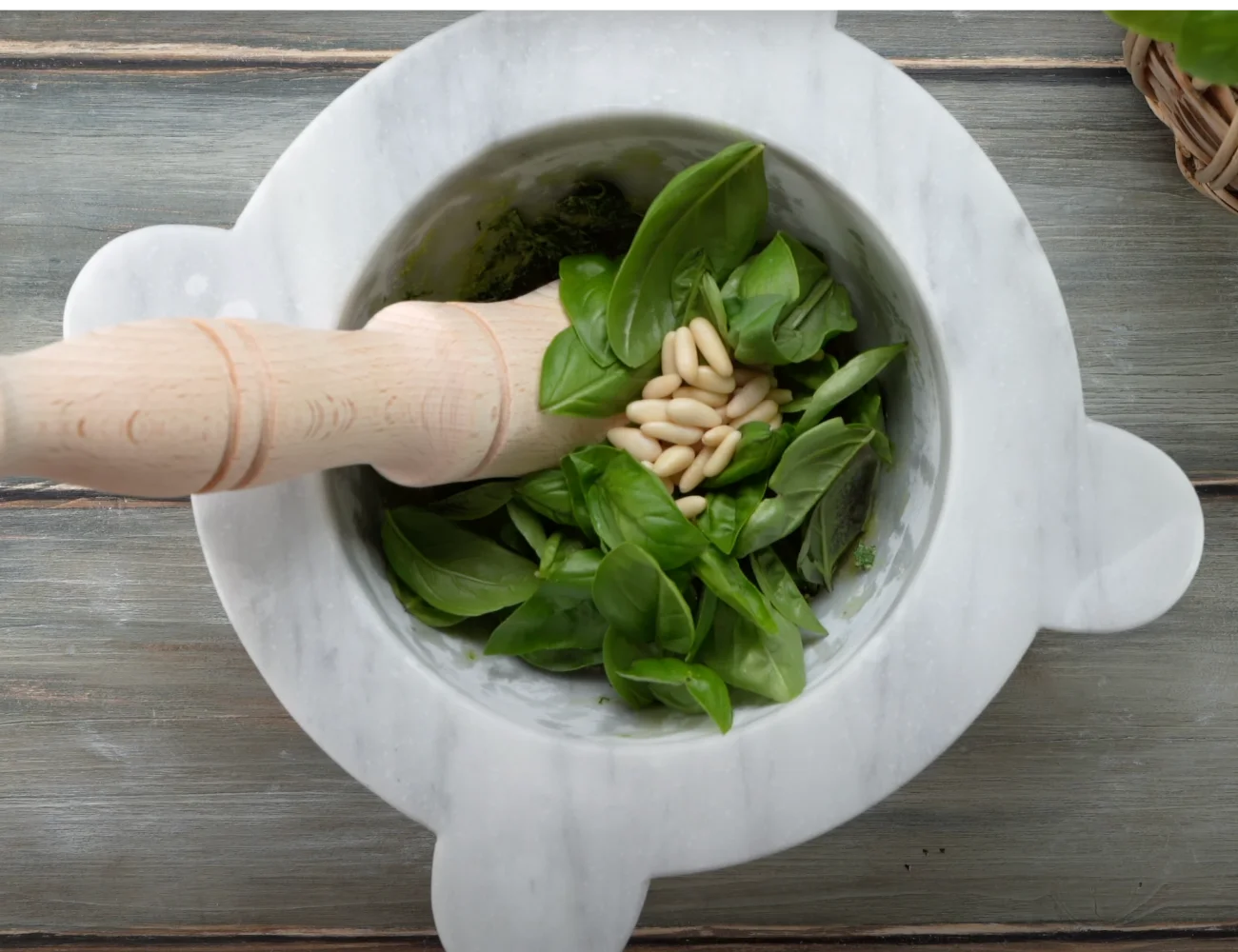
Add the Grated Cheeses
Add the grated Pecorino and Parmigiano cheeses to the pesto.
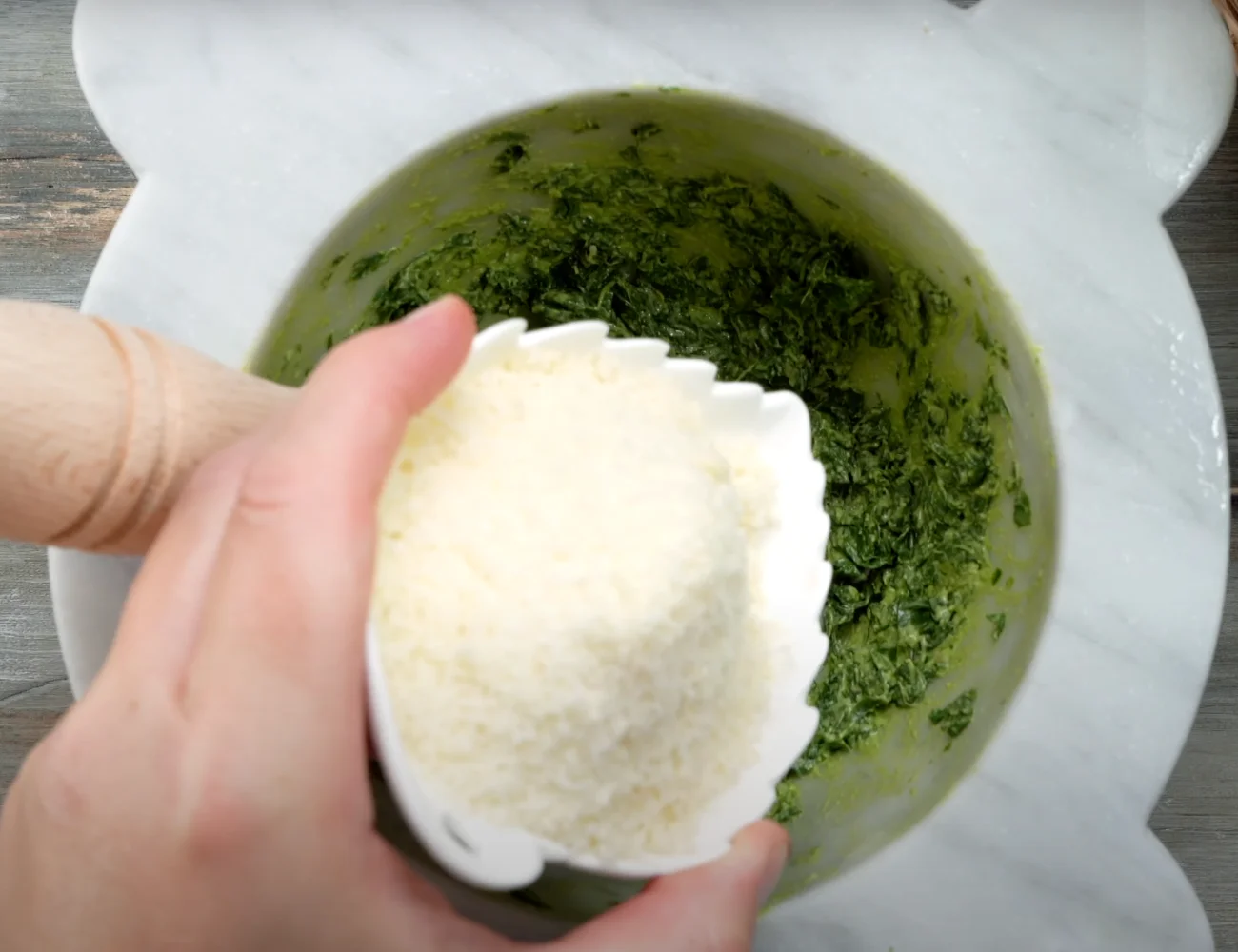
Even in this case, it is easier to add a handful of cheese at a time, mix it in, then add more.
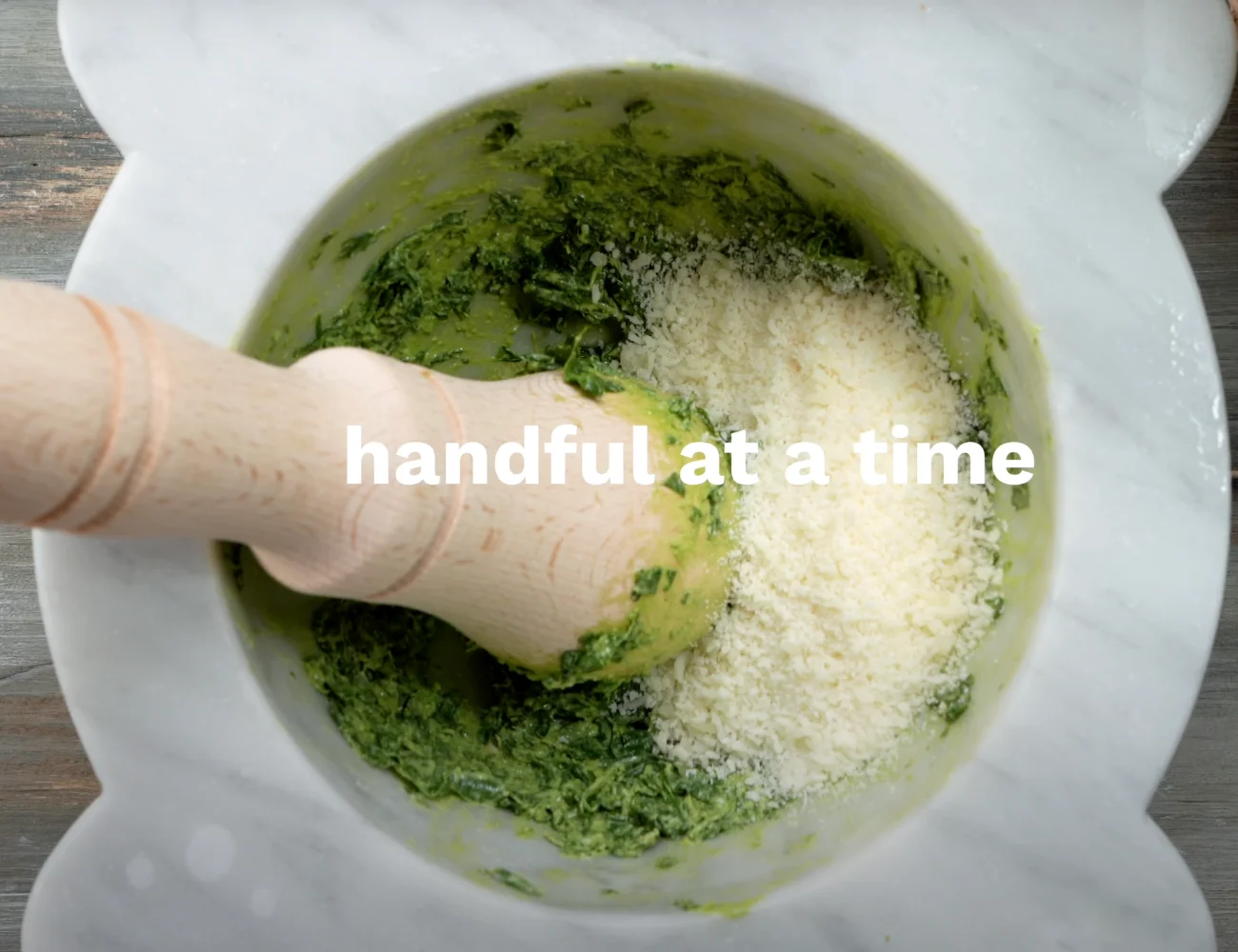
Add the Extra Virgin Olive Oil
Pesto Genovese is one of the best examples of a Mediterranean Diet recipe, including the inclusion of fresh (unheated) extra virgin olive oil. Here we are using olive oil pressed from olives harvested on our land.
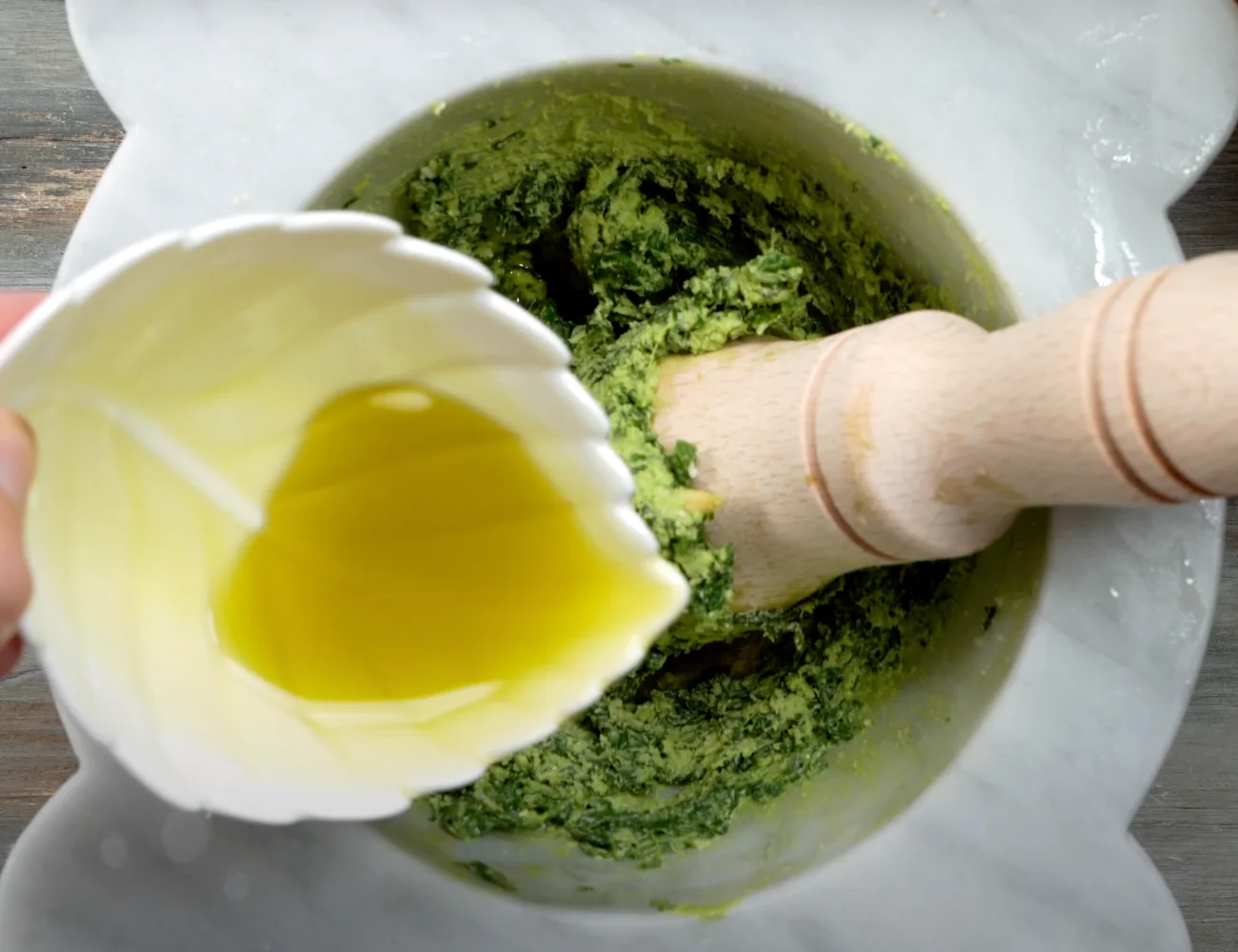
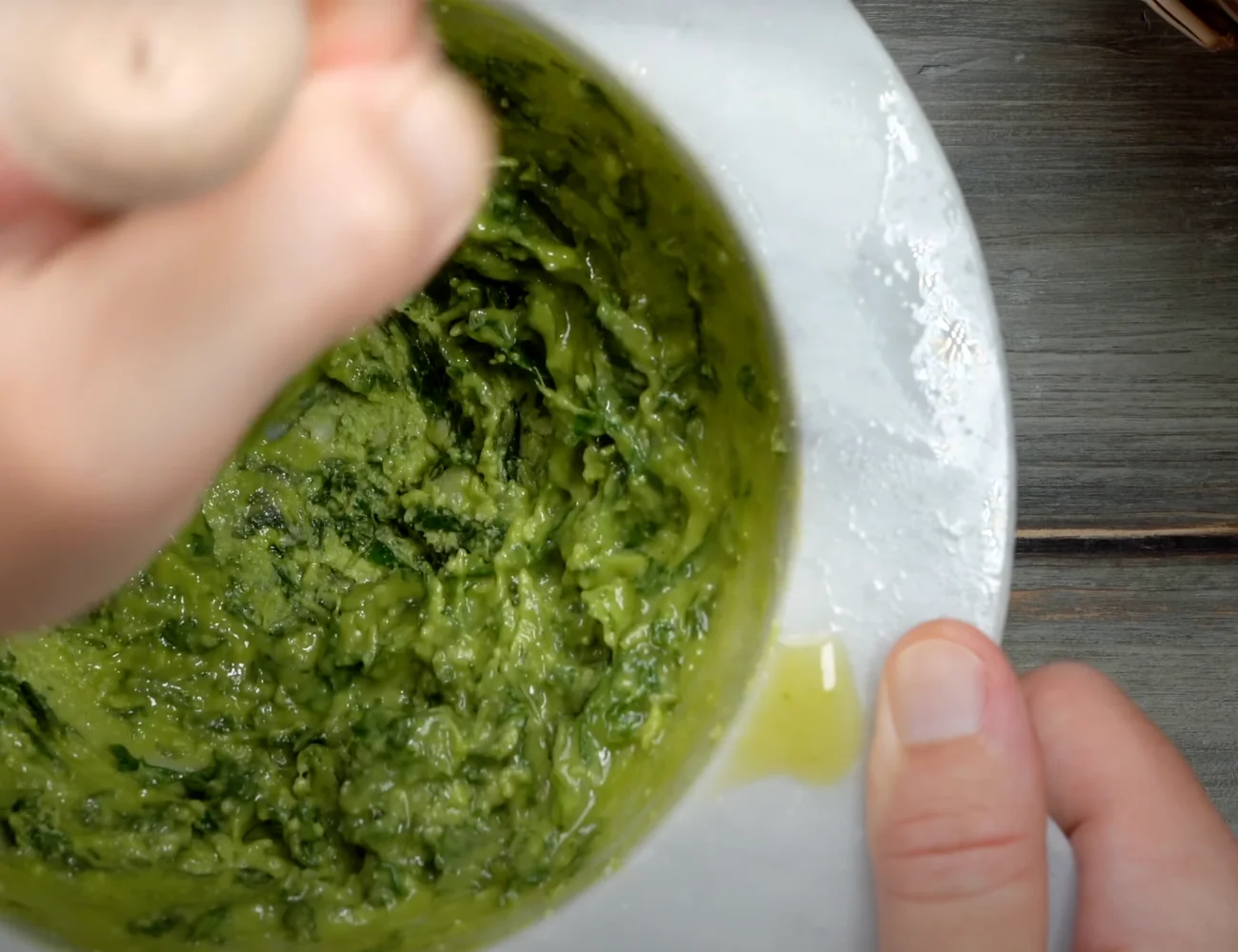
The Final Pesto Genovese
Here’s how the final Pesto Genovese should look.
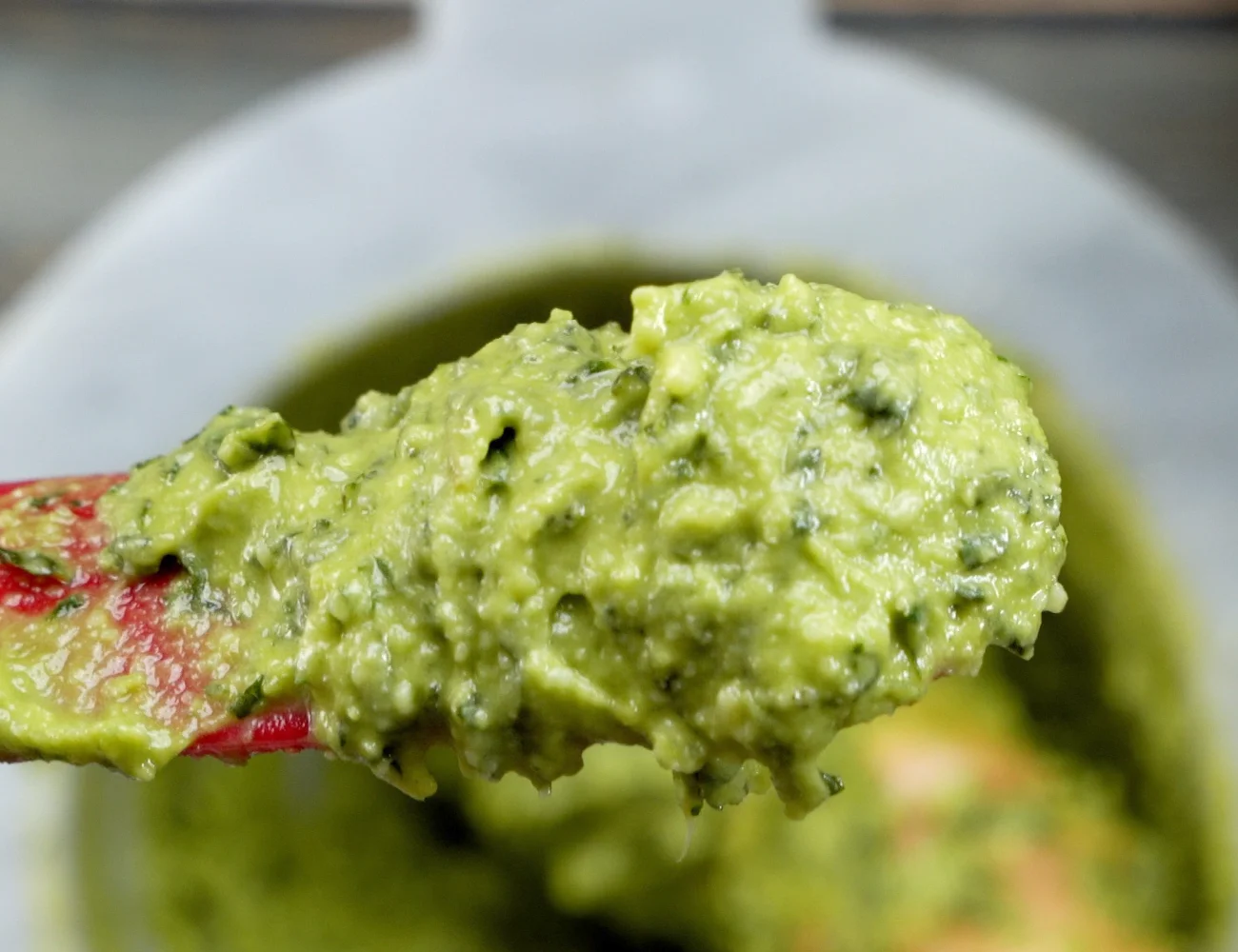
How to Make Pesto Genovese: Tips

Traditionally, basil pesto is made with a mortar and pestle. Don’t have a mortar and pestle? Continue reading for tips on making basil pesto with a food processor or immersion blender.
Want to use a normal upright blender? It’s more difficult to use a vertical blender to make pesto because of the shape of the blender container. You’ll need to mix the pesto for longer to blend it. This will likely heat the fresh basil leaves and change the flavor of the pesto.
Chill food processor bowl and blade.
If you are making this pesto with a food processor, you can try chilling the food processor bowl and blade before using them to make the pesto. This reduces the chance that the heat from the blade will warm the basil leaves—and change the taste of the pesto.
Blend with short, quick pulses.
If using a food processor, there’s another step you can take to avoid heating the basil leaves in addition to chilling the blade. Use short, quick pulses when blending the basil leaves. This helps to ensure that the blade doesn’t get too hot.
Use Real Parmigiano Reggiano cheese.
In most countries (including the United States and Italy), so-called parmesan cheese is not the same thing as Parmigiano Reggiano. It is Parmigiano Reggiano cheese that is used in most authentic recipes coming from Italy—not parmesan.
Want to make this lactose free?
Fun fact: It already is! Parmigiano Reggiano and Pecorino are aged cheeses that are considered naturally lactose free. Further, pecorino is made from sheep’s milk which tends to be easier to digest than cow’s milk for those who are lactose intolerant.

As an Amazon Associate, we earn from qualifying purchases. This means at no extra cost to you, PIATTO may earn a small commission if you click the links and make a qualifying purchase.
Authentic Pesto Genovese Recipe with Mortar and Pestle!
Equipment
- Mortar and Pestle a mortar and pestle is traditional for making pesto
- or Food Processor See tips!
Ingredients
Pesto Genovese
- 2 oz fresh basil
- 1 ¾ oz pecorino cheese freshly grated (and finely grated); technically 'pecorino sardo' (pecorino from Sardegna)
- 1 ¾ oz Parmigiano Reggiano cheese freshly grated (and finely grated)
- 1 clove garlic mashed into a paste
- 1 pinch coarse salt
- 1 ¾ oz pine nuts
- 3 ½ tbsp olive oil extra virgin
Instructions
Make the Pesto
- To the chilled mortar (bowl) add: fresh garlic cloves and salt.1 clove garlic, 1 pinch coarse salt

- Mash the ingredients until you have a paste. Don't 'pound' with the pestle. Rather, press and move the pestle in circles to grind and mash.

- Add around half of the pine nuts to the mashed garlic. Crush the pine nuts into a paste.1 ¾ oz pine nuts

- Add the fresh basil leaves, a handful at a time. Add a few more pine nuts with each handful of basil to help provide friction for mixing.2 oz fresh basil

- Finish adding the basil and mashing it.

- Add the (finely grated) Parmigiano and Pecorino cheeses, a handful at a time.1 ¾ oz pecorino cheese, 1 ¾ oz Parmigiano Reggiano cheese

- Add the olive oil and mix to combine. Continue mixing until you've made a smooth and creamy paste. Salt to taste if needed.3 ½ tbsp olive oil

- Buon appetito!

Video
Notes
- Chill the food processor bowl and blade before using them to make the pesto
- Use quick, short pulses to blend. This avoids heating the blade.

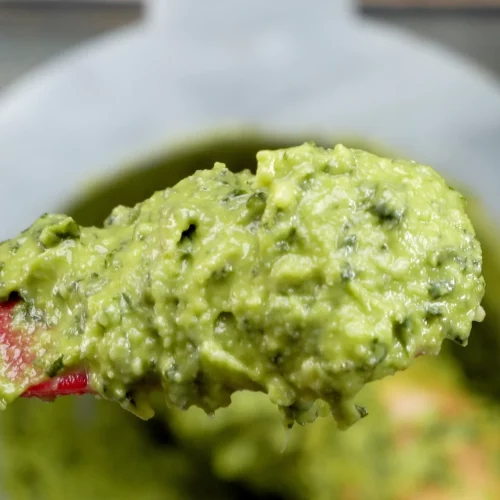
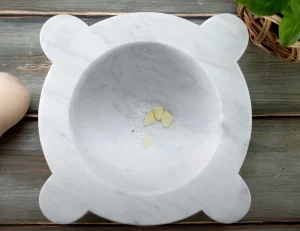

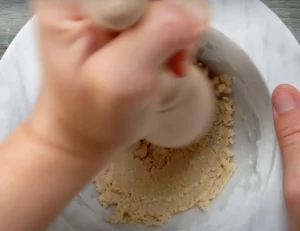
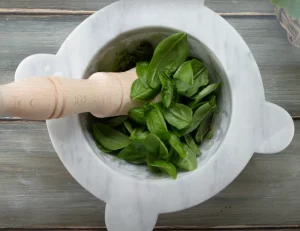
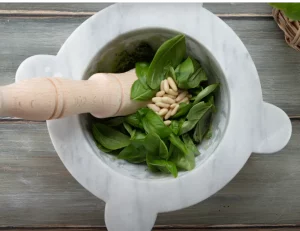
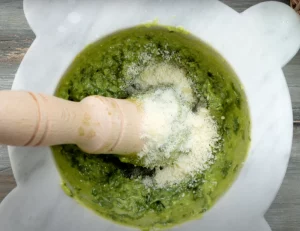
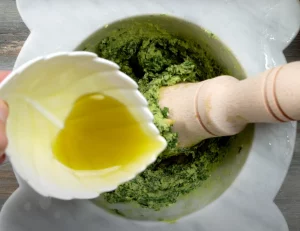
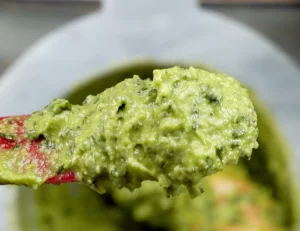

“I am not Italian, but I have made pesto this way, (learned from an old mama on a Netflix documentary about working with tastes, and she even said her grandsons do it with a blender, and it’s okay but this should be the way to do it) and I can clearly say this is the way to do it, the consistency and the freshness of the ingredients shine, I served it to some people and they said it was the best pesto they have tasted, so I believe the hard work is worth it”
“Perfetto!😋”
“😋👏👏👏👏 Eccellente”